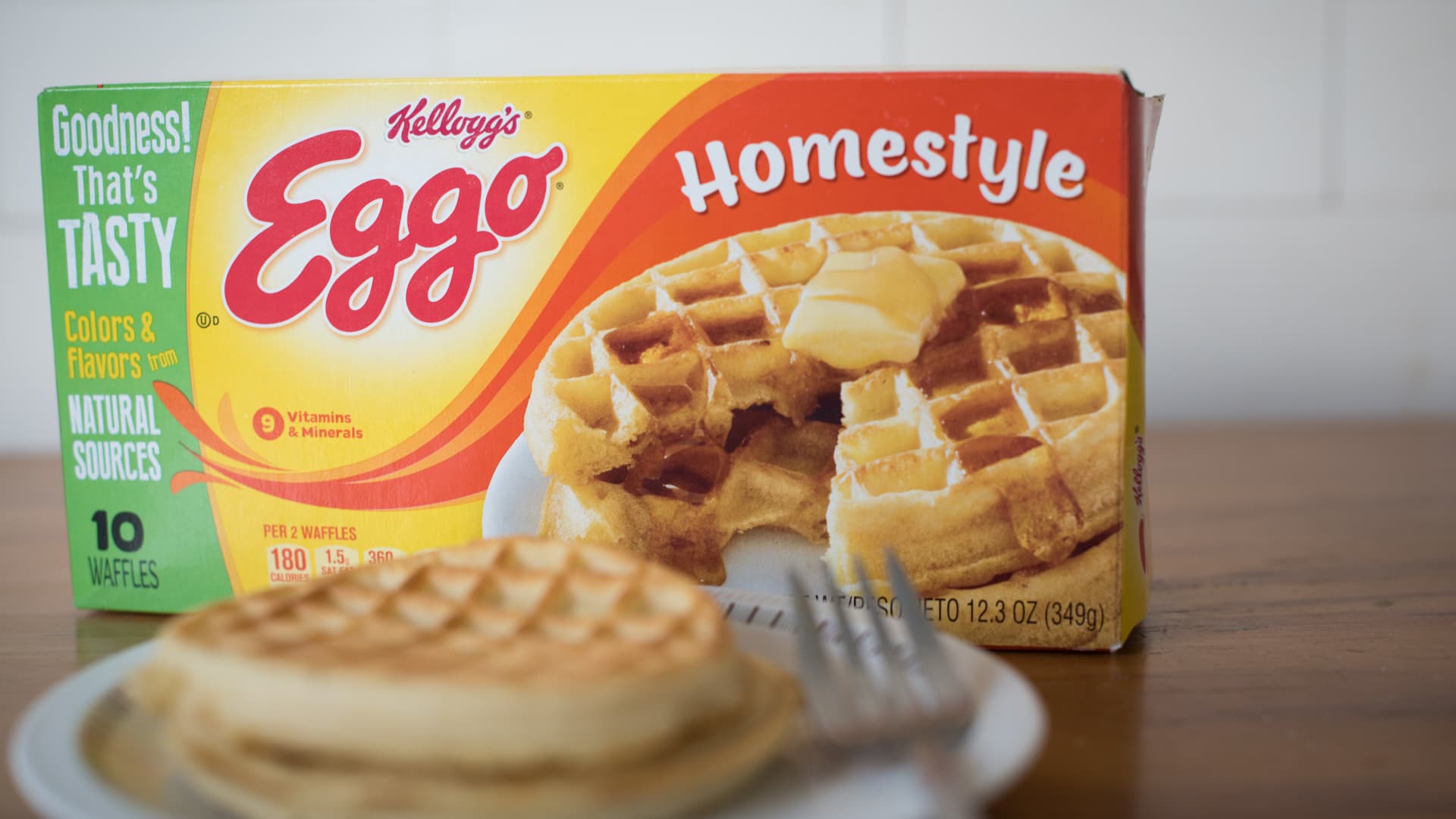The production line for the Poseidon Maritime Boeing Poseidon plane is shown in the Boeing 737 factory in Renton, Washington, on November 18, 2021.
Jason Redmond | Reuters
President Donald Trump's radical rates are ready to increase the cost of Boeing and airbus aircraft, Ge aerospace The engines, and hundreds of other aerospace and defense products, threaten an industry that helps to soften the United States trade deficit in more than $ 100 billion a year.
“Certainly makes things more expensive for industry,” said Dak Hardwick, vice president of International Affairs of the Association of Aerospace Industries, which represents Boeing, GE Aerospace, Airbus and dozens of other aerospace and defense companies, on tariffs.
The industry group said that it is asking the Trump administration to defend the provisions in an old commercial agreement of almost half a century that allows free trade of civil aircraft taxes and imports linked to national defense and security.
“The line is certainly long” for requests to the White House, Hardwick said.
Trump's executive order announcing rates said that commercial and economic policies worldwide have exacerbated a decrease in the general manufacture of the United States.
Regarding innovation in the defense sector, the order declared: “If the United States wishes to maintain an effective security umbrella to defend its citizens and patterns, as well as for its allies and partners, it needs to have a large manufacturing ecosystem and producers of upstream products to manufacture these products without an unfair confidence of the imports of key contributions.”
The aerospace industry has long been the main exporter of the United States. In Boeing alone, more than two thirds of their plane orders in the last decade come from customers outside the United States, according to company data.
“Free trade is very important for us,” said Boeing CEO, Kelly Ortberg, at a Senate audience on Wednesday. “We are really the ideal type of an export company where we are selling internationally. It is creating jobs in the United States, high -term work in the US.
The president and CEO of Boeing Kelly Ortberg, testifies to the Office Committee of the Senate Office of Commerce, Science and Transportation of the Senate in the Dirksen Senate on April 2, 2025 in Washington, DC.
Wins mcnamee | Getty Images News | Getty images
The industry has bought and sold mostly airplanes and pieces without having to pay tariffs under a 45 -year -old trade agreement, which would be derailed by the new Trump rates. The president introduced this week the taxes of 10% in countries around the world, with higher tasks in certain countries and regions, some of which, such as Europe, are key to the aerospace industry.
Imported steel and aluminum, other key aircraft materials, are subject to separated tariffs at the sector that Trump announced earlier this year.
“President Trump has been clear: if he does his product in the United States, he will not have to worry about tariffs,” said White House spokesman Kush Desai, in an email.
The importer pays the tariffs, and the increase in prices due to the encumbrances would have to be absorbed by the plane or the motion manufacturer, by the still fragile supply chain or by the final consumer, Hardwick said.
Jefferies analyst, Sheila Kahyaoglu, said in a note on Thursday that the price jump on “any product within 12 months is eaten by the [original equipment manufacturer]Assuming a new purchase of inventory. Out of that period of time, ultimately, the buyer and, therefore, the consumer. “
Boeing and the S&P 500
Aircraft prices are negotiated in advance, and airlines often have to wait years for airplanes, so the costs of the materials can change drastically during that period.
“This is not where you put money for a car and ends in your path of entry” in three months, Hardwick said.
Boeing's shares, the GE and Airlines motors manufacturer fell again on Friday, which adds to the defeat of the market after Trump announced the rates on Wednesday.
“This is the only manufacturing sector where the United States has enjoyed a tremendous commercial surplus,” said Richard Abouulafia, managing director of Aerodynamic Advisory. “Then, the idea of fighting a commercial war for this industry is living in a launch giant of Crystal Palace.”
Global supply chain
Tariffs are also a new tension in the aerospace industry, which still has a fragile supply chain following Covid, with some scarce parts. The main supplies have tried to quickly hire workers and increase production during a travel rise after pandemic.
But aircraft manufacturers have not yet kept up to date.
An Airbus A321 aircraft fuselage rises with a crane in the company's final assembly line facilities in Mobile, Alabama
Luke Sharrett | Bloomberg | Getty images
Even a “made in the United States” label for an airplane is an inappropriate name.
For example, the supply chain for a Boeing 787 Dreamliner, which is assembled in South Carolina, covers Italy from Japan.
Its European rival, Airbus, has a mobile factory, Alabama, but is still in the tariff hook for imported parts, from wings to fuselages.
“It doesn't matter who the company's owner is. If an article crosses the border, it will have to be paid by the registration importer,” Hardwick said.
Airbus has expanded the factory since the first Airbus A321 Alabama assembly, a plane to Jetblue Airways Called “Bluesmobile,” he launched nine years ago. His commitment to increase the US production of their airplanes, which are still carried out largely in Europe, also includes smaller A220 assembly in Alabama, for customers that include Jetblue and Delta airlines.
American Airlines workers perform maintenance in the CFM-56 engine in Tulsa, Oklahoma
Erin Black | CNBC
Meanwhile, continuing along the supply chain, General Electric and Safran de France have a joint company in which they make CFM engines of greater sale, which feed the jets of narrow body of Boeing and Airbus. Each company manufactures certain parts of engines, which are sent to factories in Ohio, Indiana and North Carolina for GE and out of Paris for Safran.
Thousands of imported replacement parts for engines and other aircraft pieces, many of which come from abroad, could also become more expensive.
“There is no national plane,” said Abulafia.









